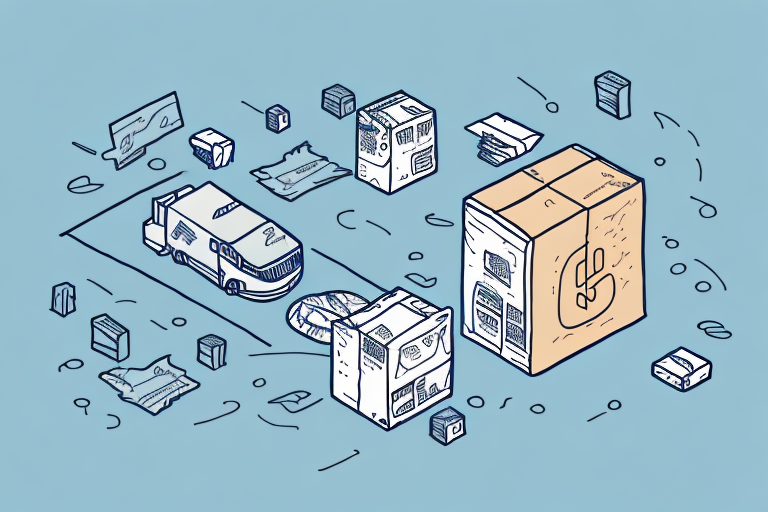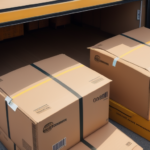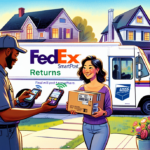UPS Returns Services: How to Optimize Your Three Delivery Attempts
In the realm of business operations, handling returns efficiently is crucial. Whether customers change their minds, encounter defective products, or simply aren't satisfied with their purchases, a streamlined return process can significantly enhance customer satisfaction and loyalty. UPS Returns Services offer businesses a robust solution to manage returns seamlessly, ensuring a hassle-free experience for both the company and its customers. This article delves into how UPS Returns Services operate, the advantages they present, and strategies to maximize the effectiveness of your three delivery attempts.
Why UPS Returns Services Are Essential for Your Business
Customer retention is heavily influenced by the returns process. According to a 2023 survey by Narvar, 96% of customers indicate that an efficient returns process positively affects their loyalty to a retailer. This statistic underscores the importance of having a smooth returns system in place. Source: Narvar 2023 Returns Report
UPS Returns Services provide businesses with a flexible and integrated approach to handling returns. By offering customizable options such as pre-printed return labels, Return Merchandise Authorization (RMA) numbers, and various return shipping labels, businesses can tailor the returns process to align with their specific operational needs. This customization not only enhances efficiency and reduces costs but also elevates the overall customer experience.
Furthermore, UPS's advanced tracking technology allows businesses to monitor returns in real-time. This capability ensures that customers receive timely updates and that returned products are processed swiftly and accurately. Enhanced visibility into the returns process enables businesses to identify bottlenecks and implement improvements, fostering increased customer satisfaction and loyalty.
How UPS Returns Services Operate: A Comprehensive Guide
Utilizing UPS Returns Services begins with creating a return label, which can be accomplished online or via the UPS mobile app. Once generated, the label can be printed and included in the original shipment, or sent electronically to the customer. Customers can then choose to drop off the return package at a UPS location or schedule a pickup. UPS allows up to three delivery attempts for the return package; if unsuccessful, the package is returned to the sender.
- UPS Print Return Label: Businesses can print physical return labels to include in shipments.
- UPS Electronic Return Label: Return labels are emailed directly to customers, offering a paperless option.
- UPS Prepaid Return Label: Pre-included labels in the original shipment facilitate easy returns.
Tracking is integral to the UPS Returns Services experience. Businesses can utilize UPS's online tracking system to oversee the status of returns, while customers can monitor their returns through the UPS app or the UPS website by entering their tracking number. This dual-layer tracking ensures transparency and fosters trust between the business and its customers.
Advantages of UPS Returns Services for Your Customers
Convenience is a primary advantage of using UPS Returns Services. Customers are afforded multiple return options, including drop-offs at UPS locations, scheduled pickups, or home pickups, catering to varied customer preferences and increasing the likelihood of successful returns.
Additionally, UPS provides comprehensive tracking information, enabling customers to stay informed about the status of their return shipments. This transparency reduces uncertainty and enhances the overall return experience.
For businesses, the flexibility to customize return policies is invaluable. Options such as offering free returns, setting specific return timeframes, or requiring original packaging can be tailored to fit business models and customer expectations. This adaptability not only improves operational efficiency but also strengthens customer trust and loyalty.
Avoiding Common Pitfalls with UPS Returns Services
Effective utilization of UPS Returns Services requires attention to detail. One prevalent mistake businesses make is failing to provide clear instructions for the returns process. Ambiguity can lead to confusion, delays, and lost shipments. To mitigate this, businesses should offer detailed guidelines on creating and using return labels, scheduling pickups, and dropping off packages at UPS locations.
Proper packaging is another critical aspect. Returns should be securely packaged using sturdy materials and sealed appropriately to prevent damage during transit. It's imperative to remove any existing shipping labels or markings to avoid confusion with the return label.
Lastly, neglecting to track return shipments can result in lost packages and dissatisfied customers. Leveraging UPS's tracking services ensures that businesses can monitor the progress of return packages, provide customers with updates, and address any issues promptly.
Preparing Your Package for a Successful UPS Return
Successful returns hinge on meticulous package preparation. Ensure that products are securely packaged to withstand transit, and include all necessary documentation, such as the return label and invoice or packing slip. Additionally, verify that the package adheres to UPS's size and weight restrictions to avoid delays or additional fees.
Selecting the appropriate shipping method is also crucial. UPS offers a range of options, including ground, air, and international services. The choice depends on the product's nature and the urgency of the return. For time-sensitive returns, opting for faster shipping methods can ensure prompt delivery.
Effective communication with the package recipient is essential. Informing them about the return and providing tracking information can prevent misunderstandings and ensure that the return is processed efficiently.
The Significance of Tracking and Monitoring UPS Returns
Tracking and monitoring are pivotal in streamlining the returns process and enhancing customer satisfaction. UPS Returns Services offer real-time tracking information, allowing businesses and customers to monitor the status of return shipments at any stage. This transparency facilitates coordination between businesses and customers, minimizing delays and ensuring successful returns.
Customizable return labels further enhance the tracking experience. Including specific instructions or information on the label, such as the reason for the return or special handling requirements, ensures that returns are processed accurately and efficiently. Additionally, this information can provide valuable feedback for business improvement.
Scheduling a Pickup for Your UPS Return Package
If dropping off a return package isn't feasible, businesses and customers can schedule a UPS pickup at a convenient date and time. This can be done online, via phone, or through the UPS app. When arranging a pickup, it's crucial to provide the driver with the return label and any necessary documentation to facilitate a smooth process.
UPS offers various pickup options based on location and package type. Some areas may offer same-day pickups, while others might only provide next-day services. Additionally, packages requiring special handling may have specific pickup requirements.
Be aware that UPS may charge fees for certain pickup services, such as pickups outside regular schedules or for packages not originally shipped with UPS. It's advisable to consult the UPS rates and fees page or contact customer service for detailed information on pickup costs and policies.
Exploring the Different UPS Return Services and Their Costs
UPS Returns Services encompass various options, each with distinct features and associated costs. The primary services include:
- UPS Print Return Label: Ideal for businesses that prefer physical labels. This option is generally cost-effective and allows for easy integration into shipments.
- UPS Electronic Return Label: A paperless solution that sends return labels via email. This service is convenient and environmentally friendly but may incur higher costs compared to print labels.
- UPS Prepaid Return Label: These labels are included in the original shipment, simplifying the return process for customers. This option may come at a premium but enhances customer convenience.
Costs for these services vary based on package size, weight, and destination. Businesses should evaluate their specific needs and budget constraints to select the most appropriate return service.
For detailed pricing information, visit the UPS Returns Services page.
Maximizing Efficiency and Cost-Effectiveness with UPS Returns
To optimize the use of UPS Returns Services, businesses should strive to minimize the number of return attempts. Providing comprehensive product descriptions, high-quality images, and accurate sizing information can empower customers to make informed purchasing decisions, reducing the likelihood of returns.
Effective communication is equally important. Keeping customers informed about their return options and guiding them through the process ensures clarity and reduces errors. Additionally, leveraging UPS's tracking capabilities can help coordinate returns efficiently, further enhancing the customer experience.
Addressing Common Issues with UPS Return Packages
Despite best efforts, challenges may arise with return shipments, such as damaged or lost packages, incorrect contents, or delivery issues. To effectively manage these problems, businesses should:
- Establish Clear Return Policies: Clearly defined policies set customer expectations and provide a framework for handling returns.
- Enhance Customer Service: Responsive and helpful customer service can resolve issues swiftly, maintaining customer trust.
- Utilize UPS Support Resources: UPS offers various support channels, including customer service hotlines, online FAQs, and live chat, to assist with return-related issues.
By proactively addressing potential issues, businesses can maintain a positive return experience and uphold customer satisfaction.
Guidelines for Shipping Hazardous Materials with UPS Returns Services
Handling returns involving hazardous materials, such as chemicals or batteries, requires strict adherence to specific guidelines and regulations. Businesses must ensure that:
- Proper Packaging: Hazardous materials should be packaged securely to prevent leaks or spills during transit.
- Appropriate Labeling: Packages must be clearly labeled to indicate the presence of hazardous materials, complying with regulatory standards.
- Comprehensive Documentation: Necessary paperwork, including safety data sheets and shipping declarations, must accompany the shipment.
Familiarizing oneself with UPS's regulations on hazardous materials is essential. For more information, refer to the UPS Hazardous Materials Guidelines.
Managing International Returns with UPS Services
UPS Returns Services extend to international shipments, offering businesses the ability to handle returns across borders. However, international returns involve additional considerations:
- Customs Documentation: Accurate and complete customs forms are necessary to facilitate international returns.
- Regulatory Compliance: Each destination country may have unique import and export regulations that must be adhered to.
- Associated Fees: Duties, taxes, and handling fees may apply to international returns, impacting overall costs.
UPS provides various international return options, including UPS Return Labels, UPS Print and Mail Return Labels, and UPS Electronic Return Labels, each designed to streamline the international returns process. Businesses should consult the UPS International Returns page for detailed information and guidelines.
In summary, UPS Returns Services offer businesses a reliable and efficient means to manage returns, enhancing customer satisfaction and fostering loyalty. By following best practices and leveraging the full spectrum of UPS's return solutions, businesses can optimize their returns process, ensuring successful outcomes with each of the three delivery attempts.




















